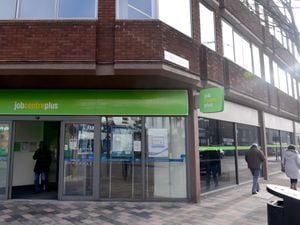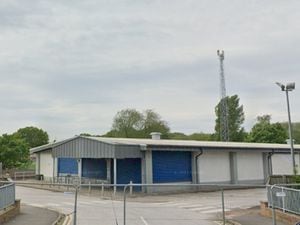West Midlands unemployment rate drops
The unemployment rate fell in the West Midlands in the three months to the end of August.

Numbers claiming unemployment benefits also fell across the region in September.
The number of UK workers on company payrolls has surged by more than 120,000 above pre-pandemic levels after a record jump in September as vacancies also remained above a million for the second month running, according to official figures.
The Office for National Statistics said the number of payrolled workers rose by 207,000 between August and September to a record 29.2 million.
This was 122,000 higher than levels seen before before the pandemic struck in February 2020.
The data also showed another record quarterly leap in job vacancies, up by 1.1 million between July and September.
Britain's recovery in the jobs market saw the rate of unemployment fall further to 4.5 per cent between June and August from 4.6 per cent in the quarter to July, the ONS added.
The figures showed nationally unemployment fell 126,000 in the quarter to August to 1.5 million, while employment rose 235,000 to 32.4 million.
In the West Midlands the unemployment rate was 4.9 per cent with 142,000 unemployed and 2.78 million in work – an employment rate of 59.1 per cent. The unemployment rate for the quarter to July had been 5.1 per cent.
The number of people claiming unemployment benefits, including Universal Credit, last month was down 7,690 to 223,045 in the region – 6.1 per cent of the working population.
Wolverhampton saw a fall of 1,180 to 14,155 (nine per cent) with Sandwell down 735 to 16,490 (eight per cent).
Dudley had 425 fewer claimants at 11,785 (6.1 per cent) and Walsall dropped 420 to 12,640 (7.3 per cent).
In Staffordshire claimant numbers were down 895 to 19,445 (3.6 per cent). Stafford reduced by 135 to 2,605 (3.1 per cent) with Cannock Chase down 95 to 2,660 (4.2 per cent), South Staffordshire reducing by 90 to 2,325 (3.5 per cent) and Lichfield having 55 fewer claimants at 2,100 (3.4 per cent).
Wyre Forest, which includes Kidderminster, was down 105 to 2,580).
Darren Morgan, director of economic statistics at the ONS, said: "The jobs market has continued to recover from the effects of the coronavirus, with the number of employees on payroll in September now well exceeding pre-pandemic levels.
"Vacancies also reached a new one-month record in September, at nearly 1.2 million, with our latest estimates suggesting that all industries have at least as many jobs on offer now as before the onset of Covid-19."
Chancellor Rishi Sunak said of the latest jobs figures: “As we move to the next stage of our support, it’s encouraging to see our Plan for Jobs working – the number of expected redundancies remained very low in September, there are more employees on payrolls than ever before and the unemployment rate has fallen for eight months in a row.
“We remain committed to helping people find great work, with an extra £500 million to support hundreds of thousands back into employment and help the lowest paid to progress in their careers.”
The ONS flagged the impact of the mounting recruitment crisis in the UK, with recent analysis showing a raft of sectors struggling to fill posts as vacancies rose 318,000 above levels seen before Covid.
The hospitality sector is finding it the most difficult to recruit, according to recent ONS analysis, with nearly a third (30 per cent) saying it is harder than normal to fill vacancies.
In another sign of the buoyant recruitment market, the ONS said the biggest rise in vacancies was seen in the administration and support sector – namely temporary employment agencies – with a 165,000 increase.
Hospitality firms were looking to fill 32,000 jobs in September.
Minister for Employment Mims Davies said: “With unemployment falling once again, and another record rise in the number of workers on employer payrolls, it's clear our plan to create, support and protect jobs is working.
“As we enter the next phase of recovery, the £500 million boost to our Plan for Jobs will continue to deliver more skills and opportunities for people up and down the country whilst crucially helping to fill vacancies across growing sectors as we push to build back better.”
British Chambers of Commerce director of policy, James Martin, said: “With the number of employees working in the UK economy at the end of September climbing back to pre-pandemic levels, the overall UK labour market is showing some recovery. Businesses who have shown innovation and creativity to survive and rebuild from the pandemic should take much of the credit.
“But there remain very real difficulties under the overall numbers, with labour and skill gaps, rising cost pressures and an increasingly onerous tax burden showing that the Government needs to act now to improve business conditions.”
Matthew Percival, the Confederation of British Industry's programme director for skills and inclusion, said: "Companies have found hiring difficult this autumn and the official data is beginning to tell the same story, with the number of people on payroll exceeding pre-Covid highs and record vacancies.
“It's welcome that Government has set up a new taskforce chaired by Sir David Lewis to advise on the impact of supply chain disruption and labour shortages on the recovery. Business and Government working together is the best way to create the high-wage, high-skill, high-investment, high-productivity economy we all want to see.”





